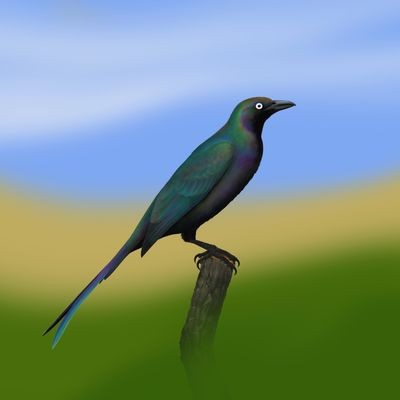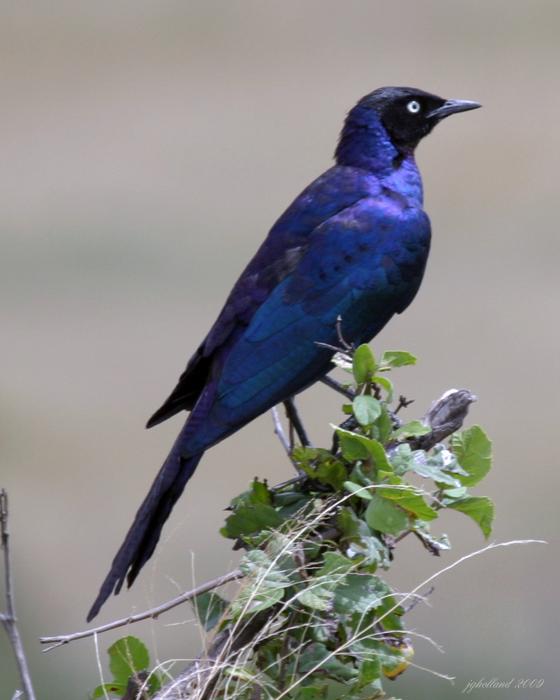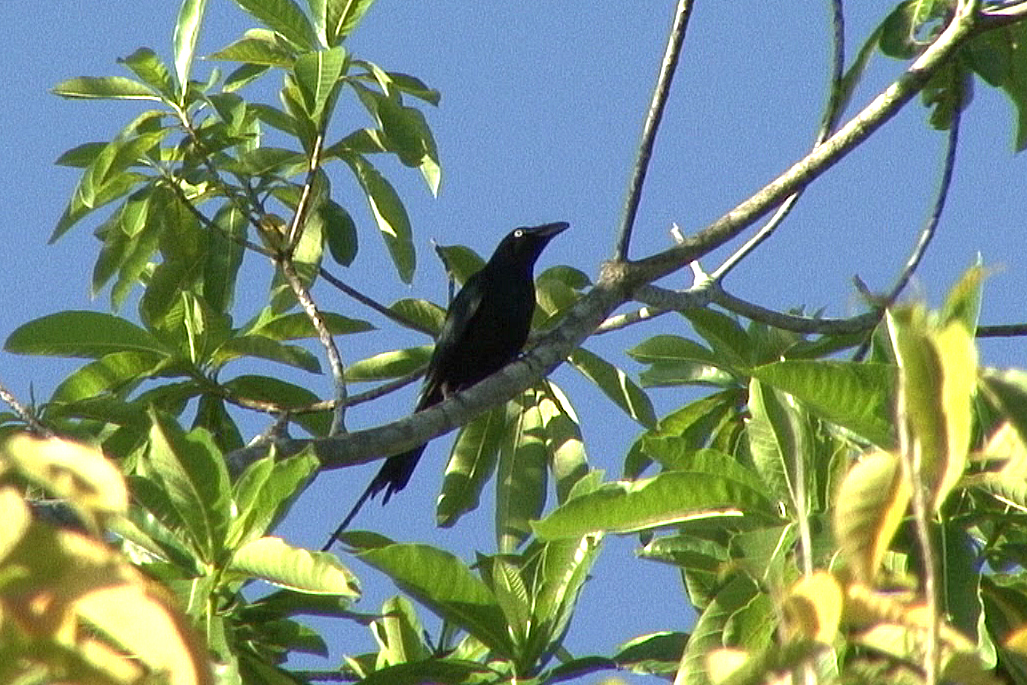
Aplonis brunneicapilla
SUBFAMILY
Sturninae
TAXONOMY
Rhinopsar brunneicapilla Danis, 1938.
OTHER COMMON NAMES
French: Stourne aux yeux blancs; German: Weissaugenstar;
Spanish: Estornino de Ojos Blancos.
PHYSICAL CHARACTERISTICS
11.4–12.6 in (29–32 cm); 2.1–2.6 oz (59–73 g). A purple and
greenish glossy bird with whitish eyes, the male has a heavy,
high-arched, black bill, a slight crest of short, almost bristlelike
feathers, and elongate central tail feathers; female is
slightly less iridescent and with a slightly less arched bill. Juvenile
has a less robust bill, duller upper plumage, dark eyes and
underparts, with streaking on lower breast and belly.
DISTRIBUTION
Papua New Guinea, and Bougainville, Rendova, Choiseul, and
Guadalcanal in the Solomon Islands.
HABITAT
Upland and lowland forest, forest edge, cultivated areas.
BEHAVIOR
Gregarious both in nesting and feeding.
FEEDING ECOLOGY AND DIET
Diet consists primarily of fruit and berries taken in the canopy.
REPRODUCTIVE BIOLOGY
Colonial cavity nester.
CONSERVATION STATUS
Endangered as a result of fragmentation of populations and
taking of chicks as food.
SIGNIFICANCE TO HUMANS
Cavity trees reportedly cut down to obtain nestlings as food.
Photo Gallery of - White-eyed starling




 Animalia Life
Animalia Life